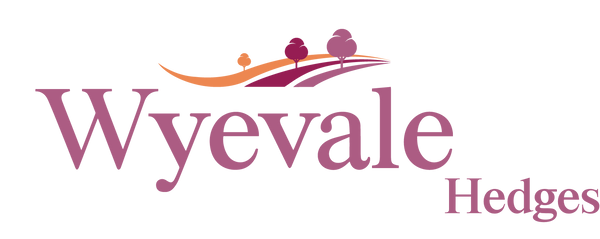Transplants, Undercuts & Seedlings
Why Measure hedges by height?
Most of the time people measure hedging plants by height, this is quick and useful but does having the same height make two plants equal? The answer is no. At Wyevale we actively improve the quality of our hedging plants using two techniques, transplanting and undercutting. These techniques serve to trim the roots of the plant, resulting in lasting benefits to the appearance, health and functionality of the plants.
That's why on our site you will find plants listed by the age of the plant and how the roots have been cut


Take these examples, all of these plants are the same height but there are visually clearly stronger and better plants for hedging on the right sides, that is because they have been transplanted and grown with our growing techniques here at Wyevale Nurseries.
Transplant
When the plants are dormant, our team of growers extract them from the fields. Once lifted, our team conducts a grading process, they examine every plant individually and remove those that do not meet our quality standards. The tips and roots of the plant are trimmed by hand, then the plants are replanted into the fields and cared for as they grow.
Undercut
Just like transplants, these plants undergo root cutting. However, the key difference is that the roots are cut when the plants are still in the ground, and tips are not trimmed. This is done for species that respond well to only having the roots cut to create a bushy plant. A large blade is carefully passed underneath the plants, cutting through the root system.
Seedling
These plants are grown from seed in the ground without undergoing root cutting. Typically, this applies to young plants below the age of one year. It is our common practice for most species to be either transplanted or undercut once they reach one year of age. Although we call this a seedling it is important to note most species we offer are grown from seed, though they may later be named transplant or undercut.
Let's take a look inside!


Split and highlighted
From splitting the plants vertically and highlighting the stem we can quickly notice that the transplanted plants (1+1) are approximatley 3 times the thickness than the seedlings (1+0), most sellers supply seedlings when they do not specify the age of the plant but only the height.

Benefits of root cutting
Bushier Appearance: Plants have a dominant bud at the top called the terminal bud, which releases hormones that tell the plant to grow upward and inhibit the growth of side branches. When we trim the roots during transplanting, it interrupts the flow of these hormones to the side buds. Without the influence of these hormones, the side buds start growing and developing into new branches making the plant bushier, fuller and structurally more appealing.
Stronger Immune System: Root pruning encourages the development of fibrous lateral roots, which means a more extensive root system. lateral roots have a greater surface area and are responsible for absorbing water and nutrients from the soil. This improves nutrient absorption and water uptake, fostering healthier growth and fortifying the hedge against challenging environmental conditions and potential diseases.
Stronger foundations: Cutting the roots forces the plant to allocate more resources and energy towards developing the growth of the stem. This response is a natural mechanism of the plant to reinforce its structural integrity. By developing a thicker stem, the plant becomes stronger and more resilient to external factors such as wind and other stresses, compensating for the loss of rooting. The roots however will quickly recover in time, developing a more robust and extensive network of roots than if not cut, being visibly thicker and more mature.
Improved performance: The dense growth achieved through the transplant method not only enhances the beauty of the hedge but also provides practical benefits. Thicker foliage makes a better protective barrier, against strong winds, sunlight and noise pollution. The density also benefits birds and animals using the hedge as a home, providing a better shelter with more visible coverage and food density.

Benefits of Top cutting
What has happened in this picture is the plant on the right used to be the same as the plant on the left one year ago, then we topped off (cut the top off)the plant. After the plant grew out sideways for a year, and developed bushiness suitable for hedging.
When growing a hedge the bushiness is important, it's a key factor in the structure and what you can see here are two plants with very different structure. If you plant a seedling you'll need to top it off and wait a season for it to become the ideal shape like the plant on the right. So the two are both 40-60cm yes, but the transplanted plant is a year ahead in ideal growing conditions.
More about how we grow

Grown from seed

Our awards

Grown from cuttings




